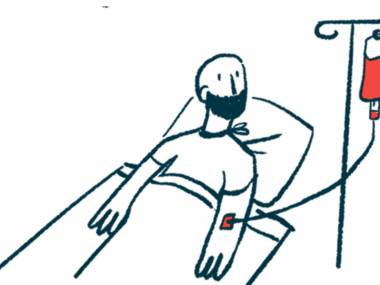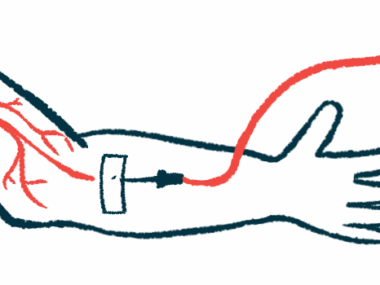Rituximab with corticosteroids or without effective for treating MG
Study means avoiding steroids could reduce long-term side effects
Written by |

Taking Rituximab by itself is as effective as combining it with corticosteroids for treating myasthenia gravis (MG) and has the benefit of reducing the proportion of patients who need rescue therapy and use immunosuppressants, a French study finds.
According to researchers, “this indicates that avoiding steroids could reduce long-term side effects and decrease rescue therapies without affecting MG outcomes.” The study, “Rituximab alone is as effective as associated with steroids on naive patients with generalized myasthenia gravis,” was published in the Journal of Neurology.
MG is an autoimmune disorder marked by impairments in nerve-muscle communication. It’s driven by self-reactive antibodies that target proteins that play a key role in the process, most often acetylcholine receptors (AChRs) and muscle-specific kinase (MuSK). B-cells, a type of immune cells specialized for producing antibodies, are the primary source of the self-reactive antibodies in MG.
Rituximab, which is available commercially as Rituxan and others, is an antibody-based therapy that targets and destroys B-cells. It’s not specifically approved for MG, but evidence supports its effectiveness in managing the disease in patients who don’t respond to other standard immunosuppressants, including those with anti-MuSK antibodies.
Corticosteroids, which broadly work by suppressing the activity of the immune system and diminishing inflammation, remain the treatment of choice for stabilizing MG initially due to their wide availability, low cost, and fact action. Their side effects may limit their use in the long term, however.
“Since [MG] is a chronic condition, long-term therapeutics need to have as few adverse effects as possible,” the researchers wrote.
To evaluate rituximab’s effectiveness as a standalone treatment for MG, researchers in France analyzed data from 68 patients who’d received it as a first-line therapy, either alone (49 patients; 72.1%) or with corticosteroids (19 patients; 27.9%).
Higher efficacy for rituximab alone
The therapy’s induction involved two 1 g infusions into the vein in two sessions 15 days apart. Additional treatment cycles were based on B-cell counts and the patients were evaluated every three months after their induction.
The 68 patients had a mean age of 59.9 when they received their first infusion. More than half had severe MG (53.7%) and most were positive for autoantibodies targeting AChR (82.4%).
At the time of their induction, the patients in the combined therapy group had more severe MG than those in the rituximab-only group, as determined by their Osserman scores (64.9 vs. 74.1).
Equivalent treatment efficacy was observed in both groups after induction, with MG severity and Osserman scores not differing between the two groups at three, six, nine, and 12 months after the first infusion.
Fewer patients in the rituximab-only group needed rescue therapy than those in the combined group (20.4% vs. 47.4%). Also, fewer rituximab-only patients needed immunosuppressants than those who took rituximab with corticosteroids (2.04% vs. 21.05%).
“The higher rate of immunosuppressive therapies after treatment with [rituximab] and the higher rate of rescue therapy suggest a higher efficacy of [rituximab] alone in MG stabilization. Still, it could also be explained by the greater severity of patients under corticosteroids at immunosuppressant introduction. Further studies need to be considered to explore that hypothesis,” the researchers wrote.
There were no differences between the two groups regarding safety outcomes.
“Our work suggests that [rituximab] alone is as effective as an association of [rituximab] and corticosteroids in MG patients,” wrote the researchers, who added that using it with newer MG therapies “will need to be discussed.”







Leave a comment
Fill in the required fields to post. Your email address will not be published.